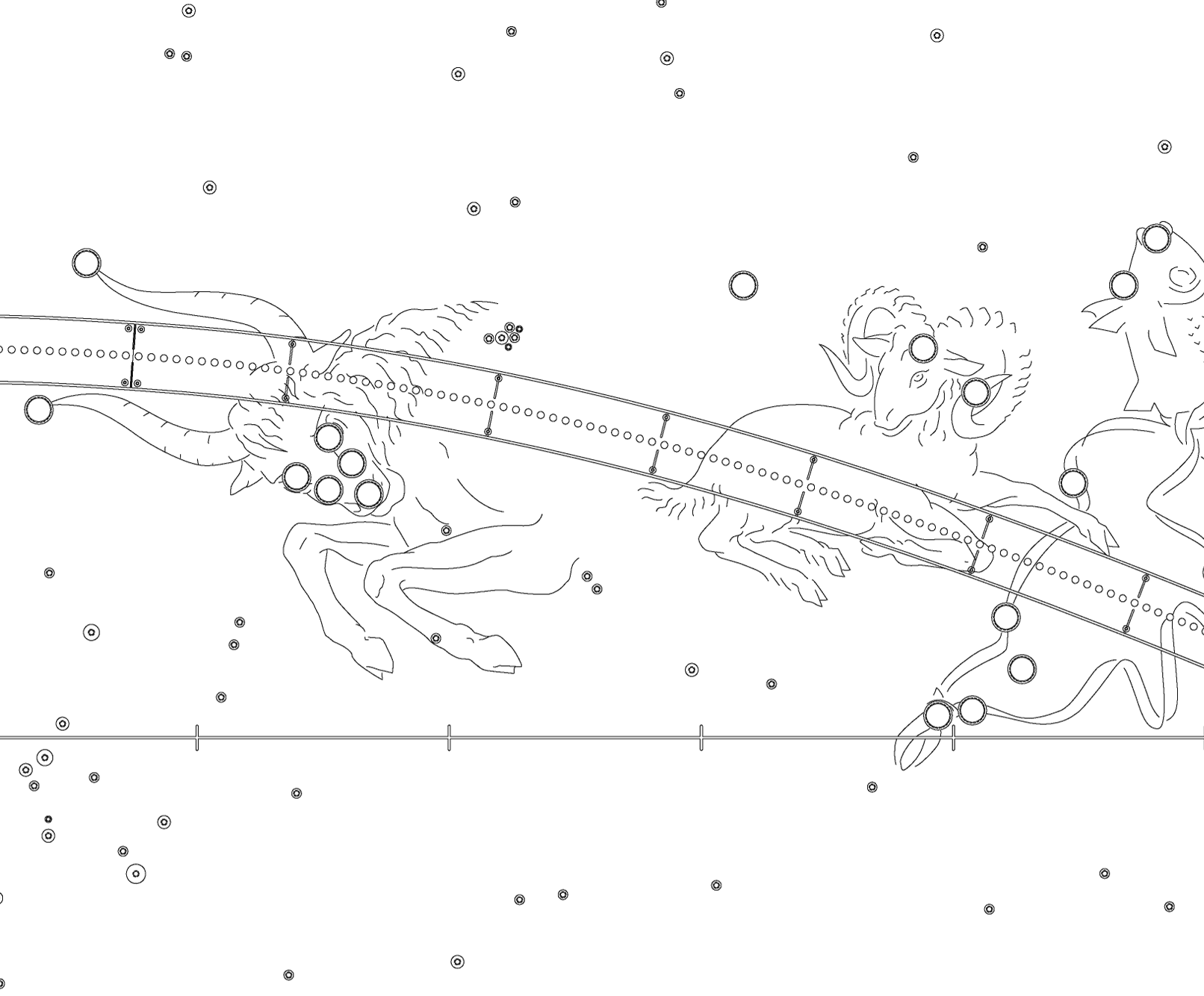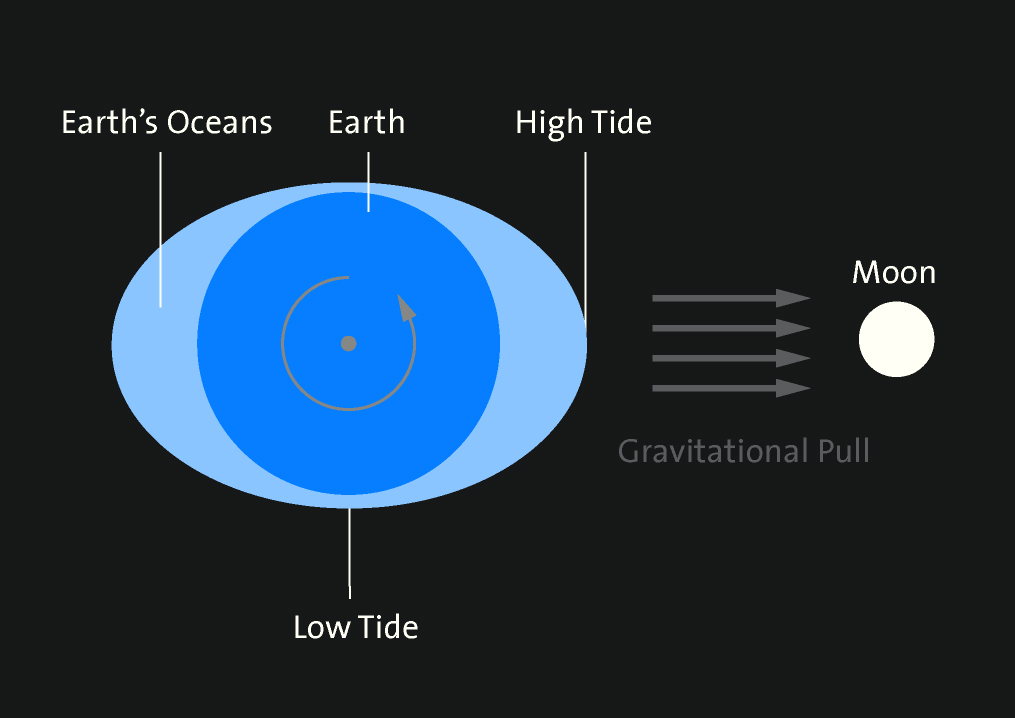Tides

Anyone who lives near the ocean is familiar with tides, the twice-a-day rise and fall of the water levels. They occur because the Moon and Sun exert a gravitational pull on Earth. We take advantage of them to bring ships into port during high tide, when the water level is at its deepest. At low tide, the ocean level drops and can leave ships near the shore high and dry.


The Moon: Primary Creator of Tides

People long suspected a link between the Moon and the tides because one of the two daily high tides roughly coincides with the Moon’s passage overhead. The gravity of the Moon and Sun tugs on Earth, causing tidal bulges in the oceans. As Earth rotates through these bulges, we experience high and low tides. The position of the Moon and Sun relative to Earth determines the size of the bulge, and thus the tides.
Different Tides Depend on the Moon’s Position

Topography Affects Tides
The height of the tides you experience depends on the topography of the coastline where you live. The biggest tidal changes in sea level happen where the natural geography forces water into narrow inlets and bays. There is nowhere for the water to spread out, so it can only move up and down throughout the day.
The highest tides in the world occur twice a day in the Bay of Fundy in Nova Scotia, Canada. At the bay’s narrowest points, the water level of the Atlantic Ocean rushing into and out of the bay causes the tides to rise and fall more than 50 feet (16 m). At low tide, the sea bottom is uncovered, revealing huge tidal flats.

